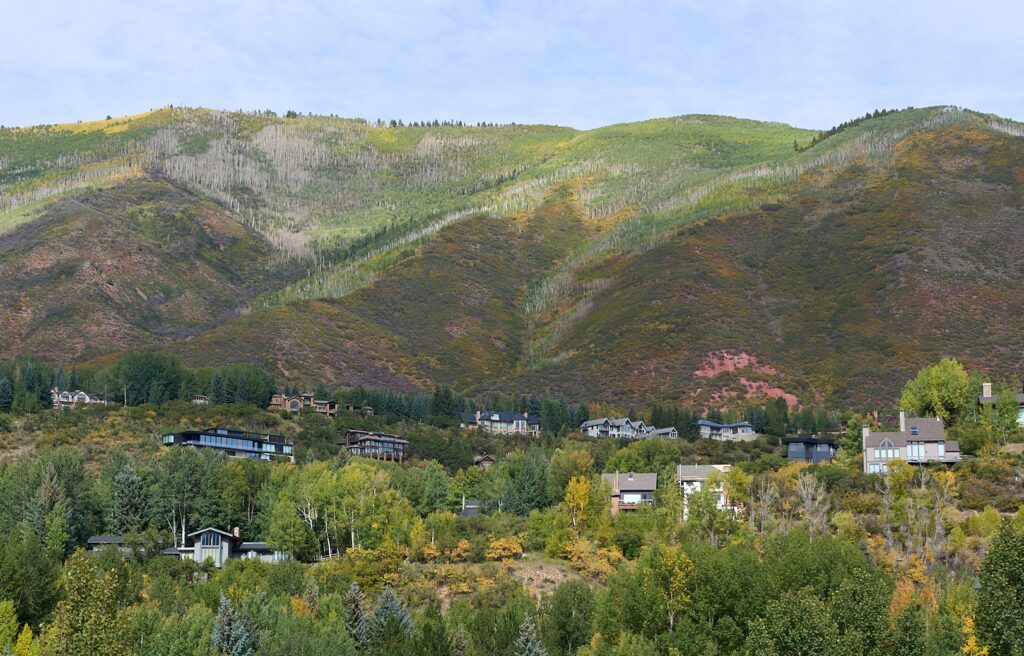Quack Facts: Dabblers vs. Divers
ACES Staff
January 31, 2013

Back at the end of August, when bear sightings were a daily occurrence and rose hips were beginning to grow plump, I took a pack of 6-year-olds for a walk around Hallam Lake. We stopped by the water to watch ducks — a group of female Mallards — swimming in the shallows. Every few seconds, as my class watched intently, one of the ducks would do this:
…and the kids would hoot and holler like crazy, thrilled that the duck was showing them her behind! But there’s a lot more to this behavior than mischievous mooning. What my class and I were observing was an action that classifies Mallards as dabbling ducks, distinct from the other major group of diving ducks.
A dabbling duck feeds by skimming food off the surface of the water, or tipping forward to submerge their heads and necks in order to eat off the bottom of the pond. Mallards, teal, Northern Shovelers, Gadwalls, American Widgeons, and Canada Geese (these are all birds you are likely to see in Colorado ponds) are dabblers. The bulk of their diet consists of invertebrates — aquatic insects, larvae and snails — and underwater vegetation such as algae (Ehrlich et al. 76-77).
Diving ducks eat largely the same things as dabbling ducks, but they go about it in a much different manner. Some, like the Ring-necked Duck pictured at the top of this post, propel themselves underwater using only their feet. Others keep their wings partially extended to help with propulsion and maneuvering (Ehrlich et al. 75). Diving ducks’ feet are comparatively larger and tend to be situated farther back on the body than the feet of dabbling ducks. While dabbling ducks tend to nest earlier in the season, taking a risk that they may lose their eggs to late-spring frosts, divers nest later and prefer large ponds to the small, shallow ones that dabblers frequent (Cornell Lab of Ornithology).
So what about those Ring-necked Ducks? Unlike the Mallards that breed here at Hallam Lake and stay throughout the year, the lone Ring-necked drake that Olivia photographed above is just visiting for the winter. You can compare the range and migration behavior of Ring-necked Ducks and Mallards by examining the graphics published by the Cornell Lab of Ornithology:
Ring-necked Ducks breed in the boreal forests of northern Canada and migrate as far south as Panama for the coldest months of winter. Female Ring-necked Ducks will often wait to start building their nests until they have already laid 3 or 4 eggs. After 25-29 days of incubation, the ducklings hatch precocial, meaning they are able to swim away from the nest after only 2 days (Ehrlich et al. 79). In other parts of North America thousands of Ring-necked Ducks will congregate in the fall and winter, migrating together (Cornell Lab of Ornithology). As far as I know we’ve rarely seen more than 5 at a time on Hallam Lake.
Ducks likely evolved these different behaviors as a result of competition. For example, Ring-necked Ducks are often found sharing ponds with Mallards and dabbling ducks, but will rarely share with other divers (Ehrlich et al. 609). Organizing animal communities based on who eats what, where, and when is a simple way to understand behavioral differences between species. And since ducks are fairly common here in the Roaring Fork Valley, the question “diver or dabbler?” can be a great way for amateur birders to practice observation.
Seeing Ring-necked Ducks in the wild is an exciting experience. Stop in for a walk around Hallam Lake this winter and perhaps you’ll get the chance to observe one of these marvelous creatures!
~ Denali Barron, ACES Naturalist
Resources:
Ehrlich, Paul R., David S. Dobkin, and Darryl Wheye. The Birder’s Handbook: A Field Guide to the Natural History of North American Birds.
The Cornell Lab of Ornithology:
– Ring-necked Ducks http://www.allaboutbirds.org/guide/Ring-necked_Duck/lifehistory
– Mallards http://www.allaboutbirds.org/guide/Mallard/id
Stanford Birds:
– Precocial vs. Altricial http://www.stanford.edu/group/stanfordbirds/text/essays/Precocial_and_Altricial.html
“Tails of Birding” blog: http://tailsofbirding.blogspot.com/2009/03/more-on-wild-duck.html
Related Content

RFV Phenology: Green is out, yellow is in! Or is it?
Learn More
ACES // City of Aspen Open Space Birding: Marolt Open Space 9/5/2024
Learn More